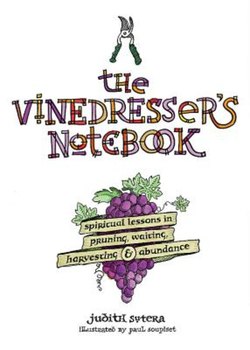Читать книгу The Vinedresser's Notebook - Judith Sutera - Страница 3
На сайте Литреса книга снята с продажи.
Introduction
ОглавлениеWHEN I CAME TO THE BENEDICTINE MONASTERY of Mount St. Scholastica in Atchison, Kansas, many years ago, it was decided that the best way to channel my energy, short attention span, and love of the outdoors would be to assign me to the garden. I loved it, a much better fit than making infirmary beds or helping the sacristan, but I had no idea how enormous a role it would play in my religious formation.
My mentor was Sister Jeannette Obrist, well into her seventies at the time, who seemed to know everything about plants. That would be logical since she was doing this as a postretirement appointment after having been a botany professor in the monastery’s college for decades.
“People think that just anyone can farm,” she would say, “but you have to be very smart to do what we do. Don’t let anyone downplay your work.” This advice would become crucial when I later chose to serve an extended period in the maintenance department and frequently heard about how I was wasting myself and my talents.
There is a saying that everything one needs to know about life is learned in kindergarten. For me, much of what I need to know about life I can learn from the earth. Human beings operate on the same general principles as other creatures. We come from a seed, grow, develop complexity, age, and die. We are affected by many environmental factors and by the unique nature we have.
The grapevines have become one of my best guides. I have been with them now for forty years. They were here before me, and I like to believe they will be here after me. Scores of sisters, students, and retreatants have helped me, and I have tried to make the work more of a life lesson than a task for each of them. Some have been bored by the preaching, some have been energized, some have carried the lessons into situations in their own lives, and some have contributed their own realizations to what I teach.
Some years ago, during a retreat, I took a small notebook and began writing and sketching what I knew, both for myself and for those who would work with me. I did it because, on that day, I needed to summarize my learning, and I had no intention of it becoming a book. Many years later, I showed it to one of my vineyard helpers, author Judith Valente, who was writing a book about our community called Atchison Blue. My notebook consisted only of the sketched pages, and I didn’t really want to add explanations or intellectual reflection. It was merely a picture book of practical advice that I wanted to let speak for itself and speak to its readers at whatever level it might touch them. In fact, if you don’t want all that extra intellectualization, I won’t be at all offended if you choose to tape the commentary pages together and let this book be just a picture story. Yet here it is in a more developed form, and perhaps it will help others to love a plant, love the miracles of life, love themselves and others.
This book is not an overtly religious book because I believe its insights apply to anyone. Nevertheless, those who come from a Judeo-Christian background will immediately recognize an additional level of significance. Old and New Testaments have numerous references to vineyards and vinedressers. At various times, the people are referred to as a vineyard or as vines. God and Jesus both identify themselves as vinedressers. Jesus takes it another step and says, “I am the vine. You are the branches.”
To the agrarian peoples of those times, the meanings would have been obvious and rich. Today, many of us are far removed from such activities and thus cannot comprehend the message. Perhaps, in reading this book and understanding how the vines work and what the role of the vinedresser is, some readers can explore more deeply what this means for their spiritual development as well as their human development.
